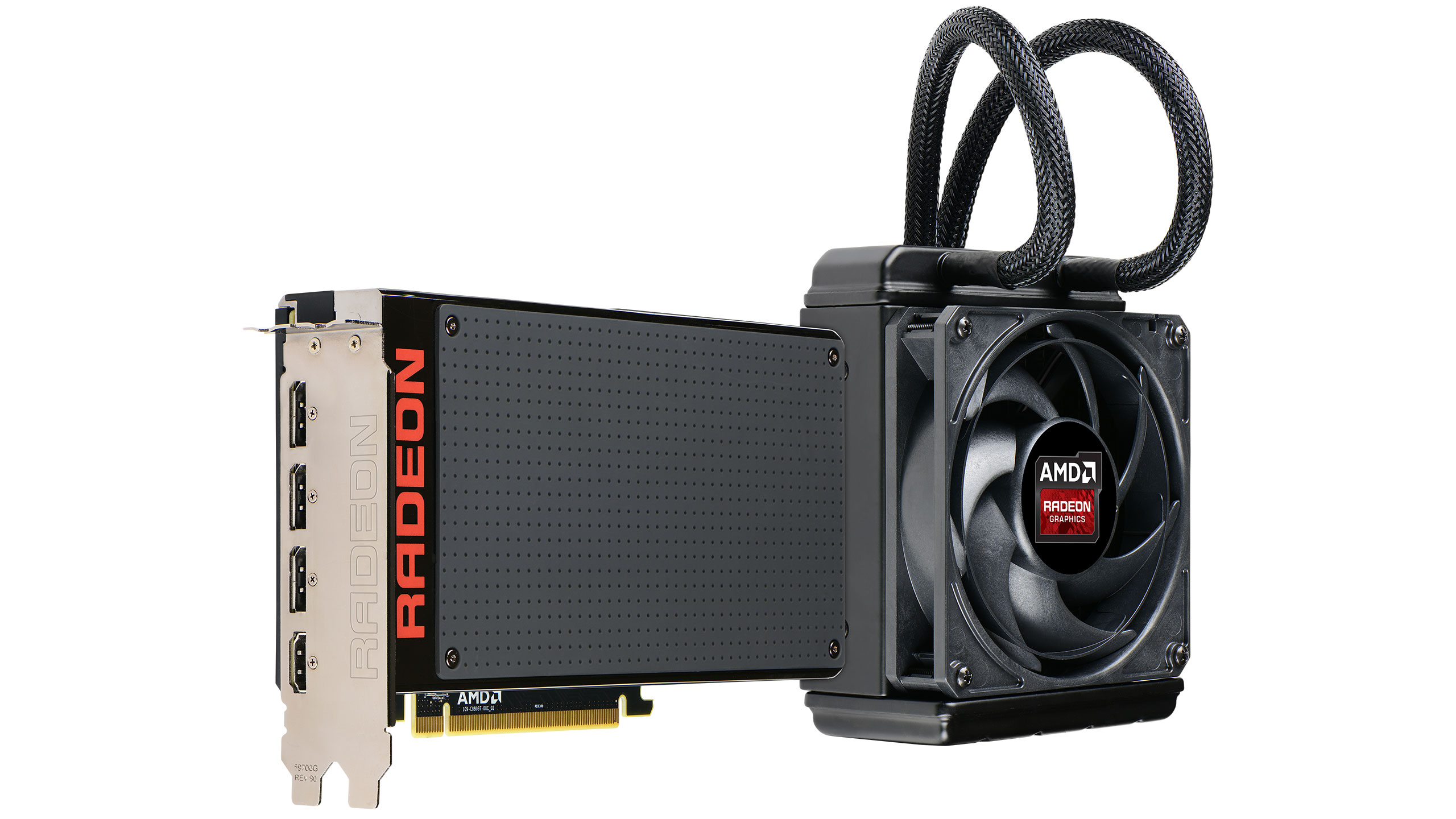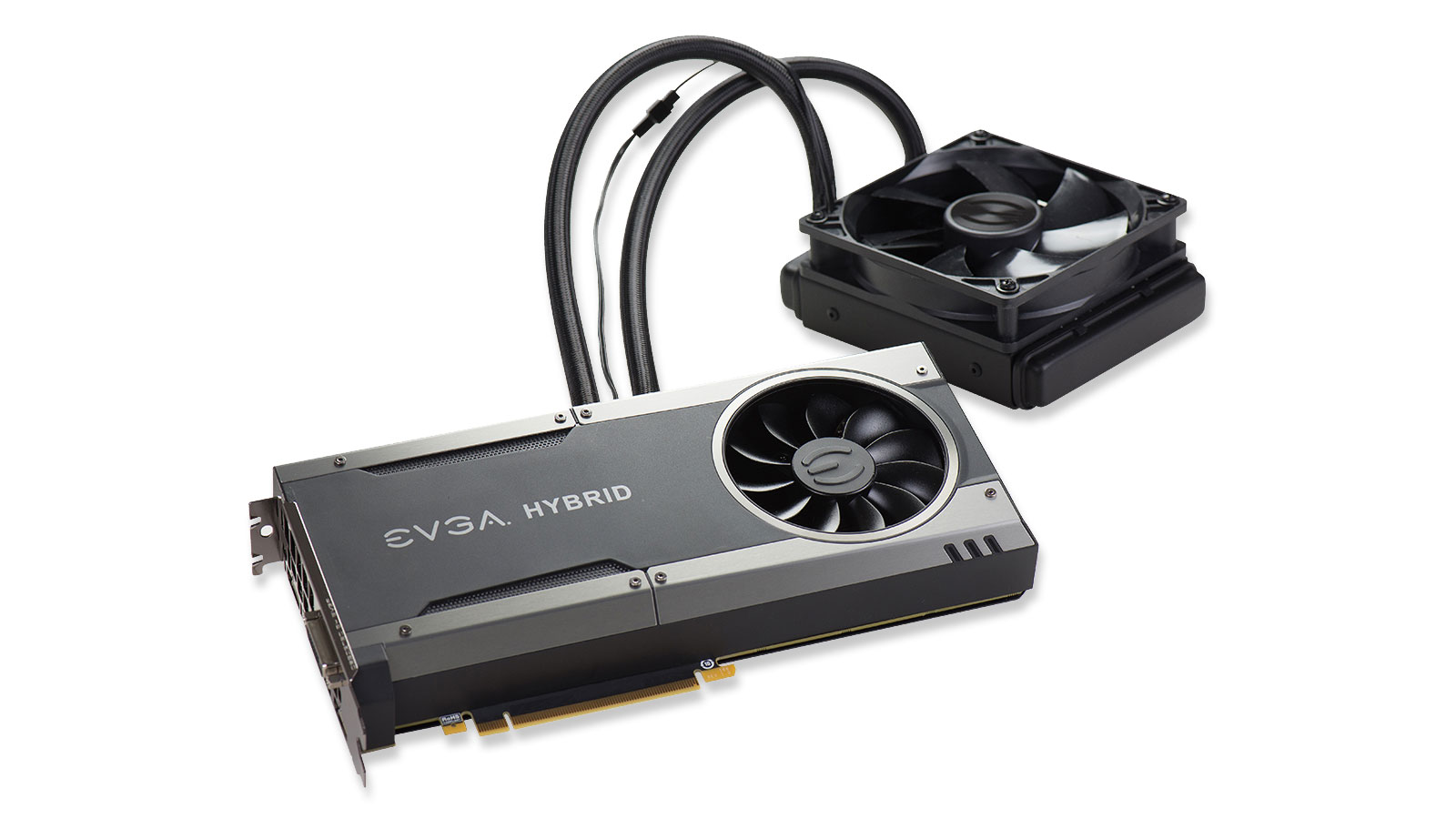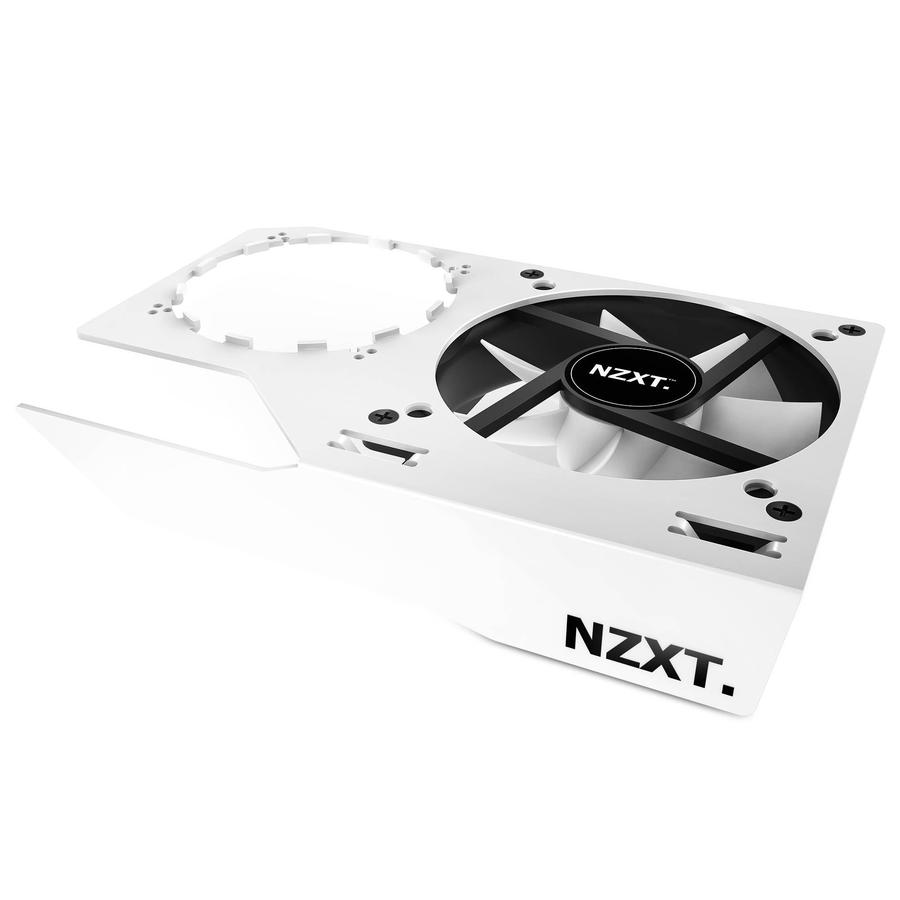What you need to know about GPU coolers
GeForce or Radeon, cooling designs matter.

Hybrid coolers
PC Gamer's got your back
Hybrid video cards represent a big step up from the reference and custom coolers in terms of thermal management. While they definitely cost more than reference or custom cooler cards, they offer a good compromise between ease of installation and good liquid cooling for your graphics card. If the idea of spills make you too nervous, but you want the advantages of a liquid-cooled GPU, a hybrid solution is the happy middle ground.
While hybrid cooler cards may differ in design, they generally share the same basic features. They typically have a water block, a tubing system, a radiator, radiator fans, and will usually have a fan positioned over the card’s VRAM as well. As far as the water block, tubing and radiator are concerned, these are often derived from AIO CPU coolers. The AMD R9 295x2, EVGA GTX 980 Ti Hybrid, and AMD R9 Fury X are examples of hybrid cards.

If none of those cards strike your fancy, there’s always the DIY route for turning your card into a hybrid card. Kits like the NZXT Kraken G10 let you mount a cooler block to your card. In the case of the Kraken G10, you can use any Asetek-based cooler with a circular water block.
Just like the AIO coolers you’d use for your CPU, hybrid cards function by carrying the heat from your GPU to a radiator, where it is then exchanged into the air passing through the radiator. This has a big advantage over air cooling, in that it minimizes the radiation of heat into the interior of your case (depending on the placement of your radiator), and can help keep ambient temperatures low. If you’re able to use an AIO cooler for you CPU and a hybrid cooled graphics card, the need for airflow inside your case is drastically reduced. In fact, the fans that push air through the radiators can be sufficient at that point.
Since liquid can carry more heat than air, liquid cooled cards can usually achieve higher stable overclocks than their air-cooled siblings. Even at stock clock, hybrid cards usually perform better. We’ve seen an EVGA GTX 980 Ti Hybrid run as much as 29 degrees (Celsius) cooler than a reference blower model.

There are a few disadvantages to using a hybrid cooler, however. The first and most obvious one is that the radiators take up extra space in your case. Not all cases can comfortably accommodate radiators, even from AIO coolers. Even if they do, using a hybrid card in conjunction with an AIO cooler for your CPU may present challenges in terms of space.
Another disadvantage is radiator placement. If you’ve ever installed an AIO cooler for a CPU, you’ll know that physically placing the radiator can be a challenge in some cases. Since the hoses are fixed, there are only so many ways you can orient and position the radiator and fan. Depending on your hybrid cooler’s hose length and radiator size, it may be difficult to position the radiator in any other place besides the rear exhaust grill.
Then there’s the issue of SLI and Crossfire. If placing one radiator is tough, it gets even harder when you have a second one to worry about. While this is possible in some cases, smaller (read: ATX mid towers and smaller) will become quite cramped.
If you’re thinking of using a hybrid cooler, it is best to go with a single card in such a setup. Additionally, if you’re looking to squeeze a little extra juice out of a card you already have, consider buying a kit and overclocking your GPU. Depending on your budget and GPU, it may be more economical than buying a new graphics card altogether.
Pros:
- Lower temperatures and higher overclocks
- Lower ambient temperatures and reduced need for airflow inside the case
- The easiest way to liquid cool your GPU
- Kits like the NZXT Kraken G10 allow for DIY hybrid cooling
Cons:
- Hybrid cards are pricier than other models
- Placing radiator can be challenging with fixed tubing length
- Space becomes an issue when used with an AIO CPU cooler
- Can be very difficult to use in SLI/CF setups
Best suited for:
- Single-GPU builds
- Larger cases with extra room for radiators and fans
Keep up to date with the most important stories and the best deals, as picked by the PC Gamer team.


